What would life look like if we wouldn’t have the wide variety of we enjoy seeing every day? Colors, throughout the years, have been an inspiration for artists, poets, singers, and regular people who just feel complete when seeing a rainbow or a beautiful and colorful landscape.
Today, we want to take your Hebrew vocabulary one step further and tell you how the colors are named in this ancient but modern language.
Learning the colors in Hebrew will expand your vocabulary and brighten your world! Colors are everywhere, so one of the first steps you should take when learning Hebrew is to make sure you know your colors to have a more rewarding experience both on your next visit to Israel or in the next class you take at the Rosen School of Hebrew.
Primary Colors in Hebrew: The root of every other color!
We divided this explanatory article into four sections; primary colors, secondary colors, Israel-related colors, and children’s songs to learn the colors in Hebrew.
Make yourself comfortable, and if you have a box of crayons nearby, grab it, bring your children over, and start practicing right away!
● Red: Red in Hebrew is אדום (pronounced: ah-dom), and it can be used in many different contexts. One of them is the national version of the Red Cross, which is called the מגן דוד אדום (pronounced: Mah-ghen Dah-vid Ah-Dom). We hope you don’t have to use this last one, and that, instead, you relate this color to the nose of a ליצן (can you figure out what this word means?).
Just to make sure you understood this color perfectly, can you name three fruits or vegetables that are אדום? If you need help, check out this article.
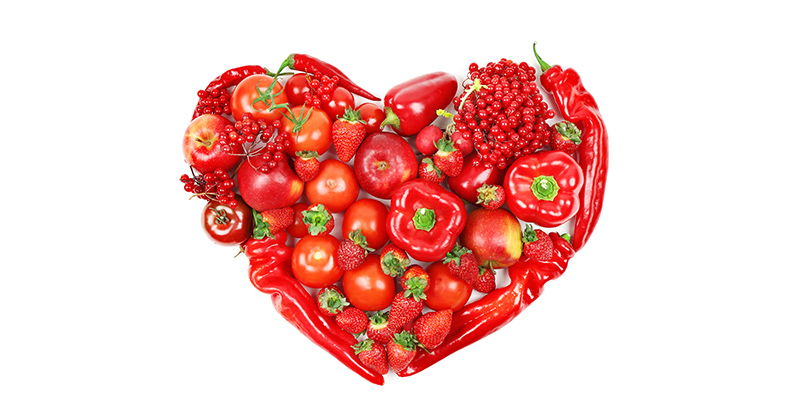
● Yellow: Yellow in Hebrew is צהוב (pronounced: tzah-hov). This color can also be used for many things. Do you remember when we talked about Israeli street food? Well, there is one sauce/topping that you can add almost to any Israeli delight, and it’s called “Amba.” Know how to recognize it? Very simple! The צהוב one!
But, let’s think beyond the delicious food. Do you know what else is yellow and very symbolic in the land of milk and honey? You’re right! Yellow is a very present color in the tiny streets of both Safed and in Jerusalem’s old city. If you wondered why it symbolized light for many of the kabbalists from the Middle Ages. Interesting, don’t you think?
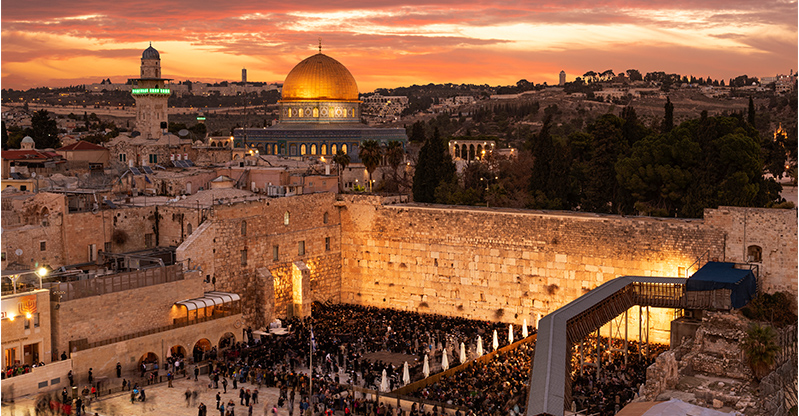
● Blue: Blue is one of the most important colors in Hebrew, and it is כחול (pronounced: kah-chol). Besides being one of the 2 colors in the Israeli flag, the color of the sea and sky, blue is a very symbolic color for the entire country and Judaism. Did you know that the color blue is mentioned in the Torah on multiple occasions? If you want to prioritize one of the colors in Hebrew, give it to blue… you’ll need to use it very often.

● White: White in Hebrew is לבן (pronounced: lah-vahn), and together with כחול, constitute most of the Israeli national symbols.
This color can be found in many symbols, flags, and events. One of our favorites is the salt crystals found at the dead sea. It’s white and glistens in the sun. In the winter, the beautiful snow on top of Mount Hermon makes one forget that one is in the dessert.
There are actually a number of fun activities related to this color in Israel! If you want another tip for something to do while in Tel Aviv, “לילה לבן” is a cultural night you want to experience at least once in your life!
The whole city stays up all night, citizens are encouraged to dress white (in a “slightly” different context than when dressing white during Yom Kippur), and many festivities are held across town.
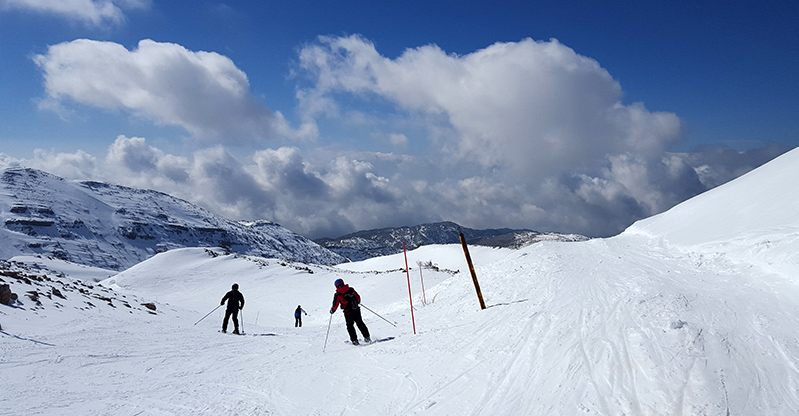
● Black: Black in Hebrew is שחור (pronounced: shah-chor), and as you already know, it is the color of clothes that help you look slim and trim! (not recommended for the hottest days of the summer).
This word can be found in way more places than just in one of Will Smith’s greatest films. In the land of milk and honey, some beaches have that name and even a well-known burger chain that also decided to include a little שחור in their name.
However, the image that comes to mind when we think of black is that of the clothing of some when at the Wailing Wall

Secondary Colors in Hebrew: Getting deeper into the crayon box!
● Orange: Orange in Hebrew is כתום (pronounced: kah-tom), and even if you were thinking oranges have the same name as the color just like in other languages, this is not the case. Oranges in Hebrew are תפוזים, and even if they are כתום in color, they don’t share a name.
One of our favorite orange scenes is the dessert sun setting over the land. Look how beautiful this image of the sunset over the old city of Tel Aviv is.

● Green: The color of trees, grass, parks, and even political parties. Green in Hebrew is ירוק (pronounced: yah-rokh). Make sure to only cross the street when the ירוק sign for pedestrians is on, or you might risk getting a police fine.
Even though the desert and cityscapes come to mind when one thinks of Israel, the lush Bahai Gardens is a fest for the eyes and a peaceful medley of green.
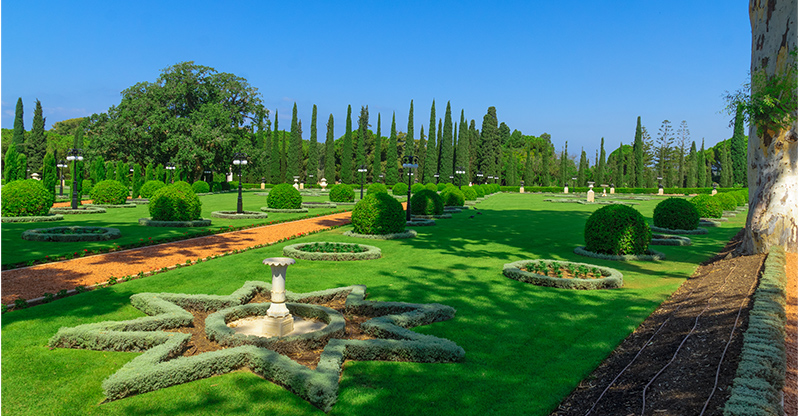
● Purple: Purple in Hebrew is סגול (pronounced: sah-gol). There is a small flower called the Jerusalem Bellflower (Hebrew: פעמונית ירושלים) that is purple and dots the land with it’s gorgeous color and design.

Israel-related colors in Hebrew
Many colors are deeply connected to Israel’s story, people, and roots. Let’s go over only two of them so you can expand your Hebrew vocabulary a bit more. Are you ready?
● Gold: Gold in Hebrew is זהב (pronounced: zah-hav). This is the color of Jerusalem, the color of the Menorah, and the color of many things we use in traditional Jewish holidays.
Not only that, you should know how to say this in Hebrew if you’re looking to get your mother a lovely necklace on your next trip to Israel. Yes, sir! A זהב one! Your mother deserves it.
Besides everything mentioned before, there is a lovely Israeli song you should definitely listen to if you want to learn Hebrew and if you’re going to get to know the most important music pieces in the history of Israel. This song named “Jerusalem of Gold” is a gorgeous art piece in which the word זהב has the leading role.

● Light Blue: Light blue is also very present in many different parts of everyday Israeli life. You can find this color in different Talit designs or in some representations of symbols of the State of Israel. Light blue in Hebrew is תכלת (pronounced: tcheh-let. It is a hard one, don’t worry!).
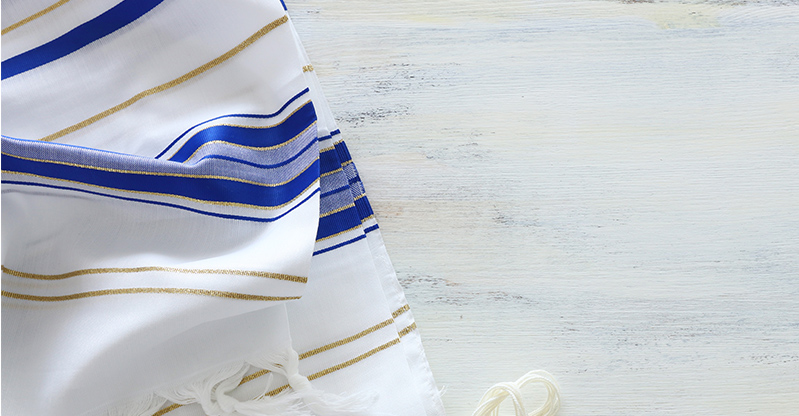
Great songs for your kids to learn the colors in Hebrew!
There are numerous songs in Hebrew that can help both you and your children master the name of the colors and expand your Hebrew vocabulary. Learning through music is a fantastic idea, especially when beginning to master a new language.
Take into account that songs for kids and children’s books are a fantastic tool for adults looking for the ultimate way to become fluent in a foreign language. Their simple words, easy-to-understand structure, and funny environment turn these materials into the best available ones for learning Hebrew.
This one, for example, is a video that includes 4 episodes of a very traditional Israeli cartoon that teaches kids the names and applications of the colors in Hebrew. It is totally worth it!
This other song teaches kids (and adults, of course) the primary colors’ names and what happens when mixing them. It can be a phenomenal way to increase your Hebrew vocabulary by incorporating words related to colors, mixing, music, and others.
Using crayons, this Hebrew song teaches kids the names of colors and what other elements with those colors are called. It also teaches that there are different times of the day – some of it should be spent drawing and painting and some of it to rest. This song, in particular, might teach your kids way more than colors, and if they actually learn the benefits of sleeping, it might give parents a few extra hours of calmness.
Learn Hebrew today. Join one of our online courses
Colors in Hebrew are just one out of many parts of the language you should master. We invite you to look at our online Hebrew courses and allow yourself to discover a new, exciting way to learn this ancient, wise, engaging, and modern language.
Believe us, it is going to be extremely כיף and you’ll for sure learn with lots of הצלחה. Are you ready?! Join today and become a Hebrew master.
Article originally published 1 August 2018.







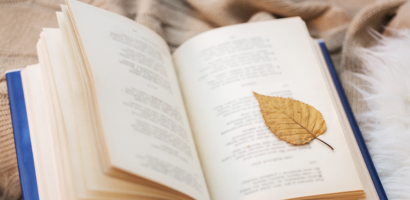
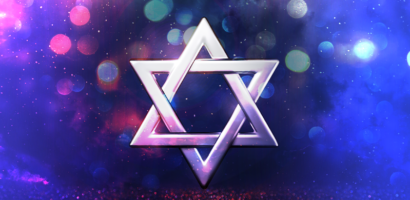



 Available on WhatsApp
Available on WhatsApp
Join the conversation (No comments yet)